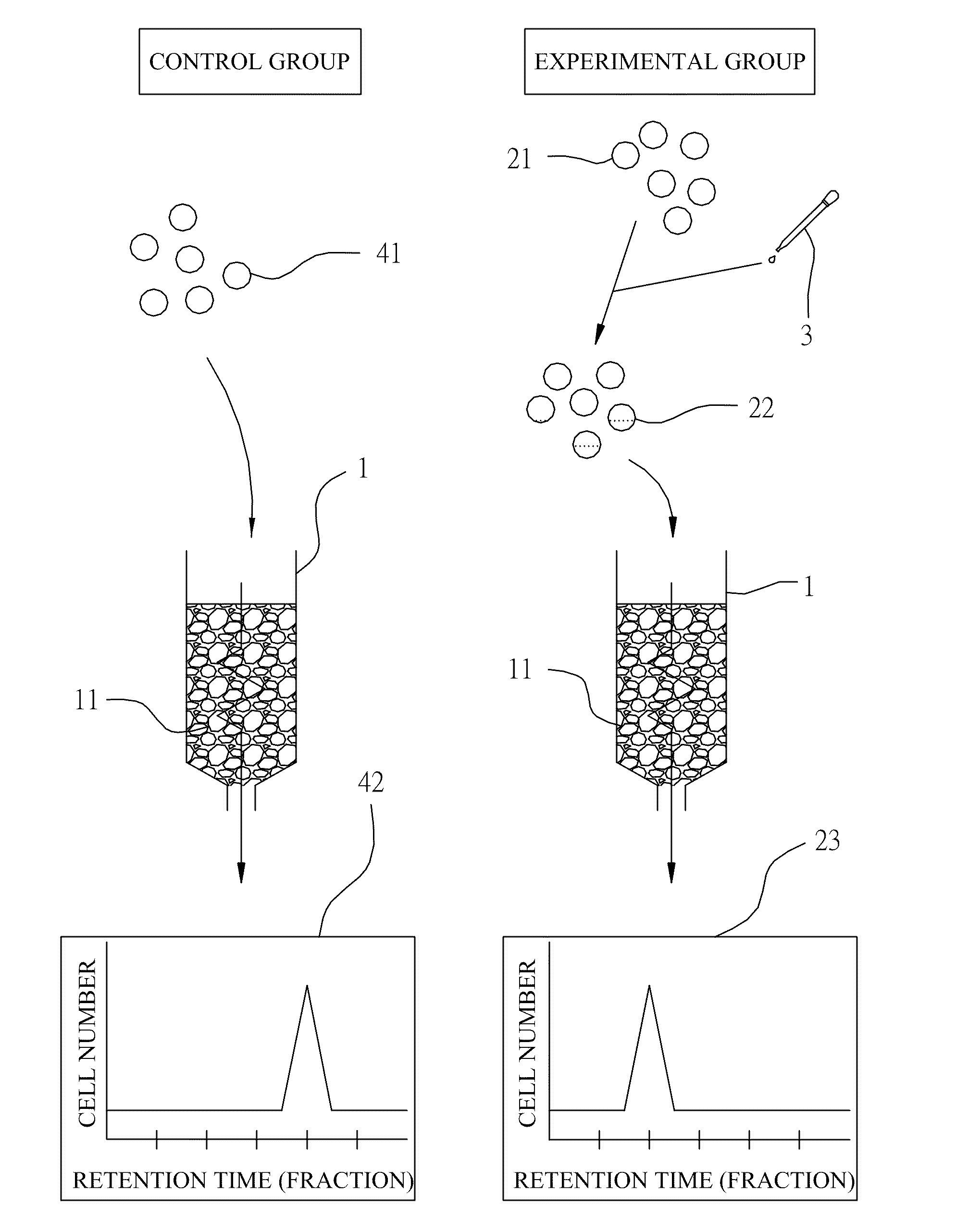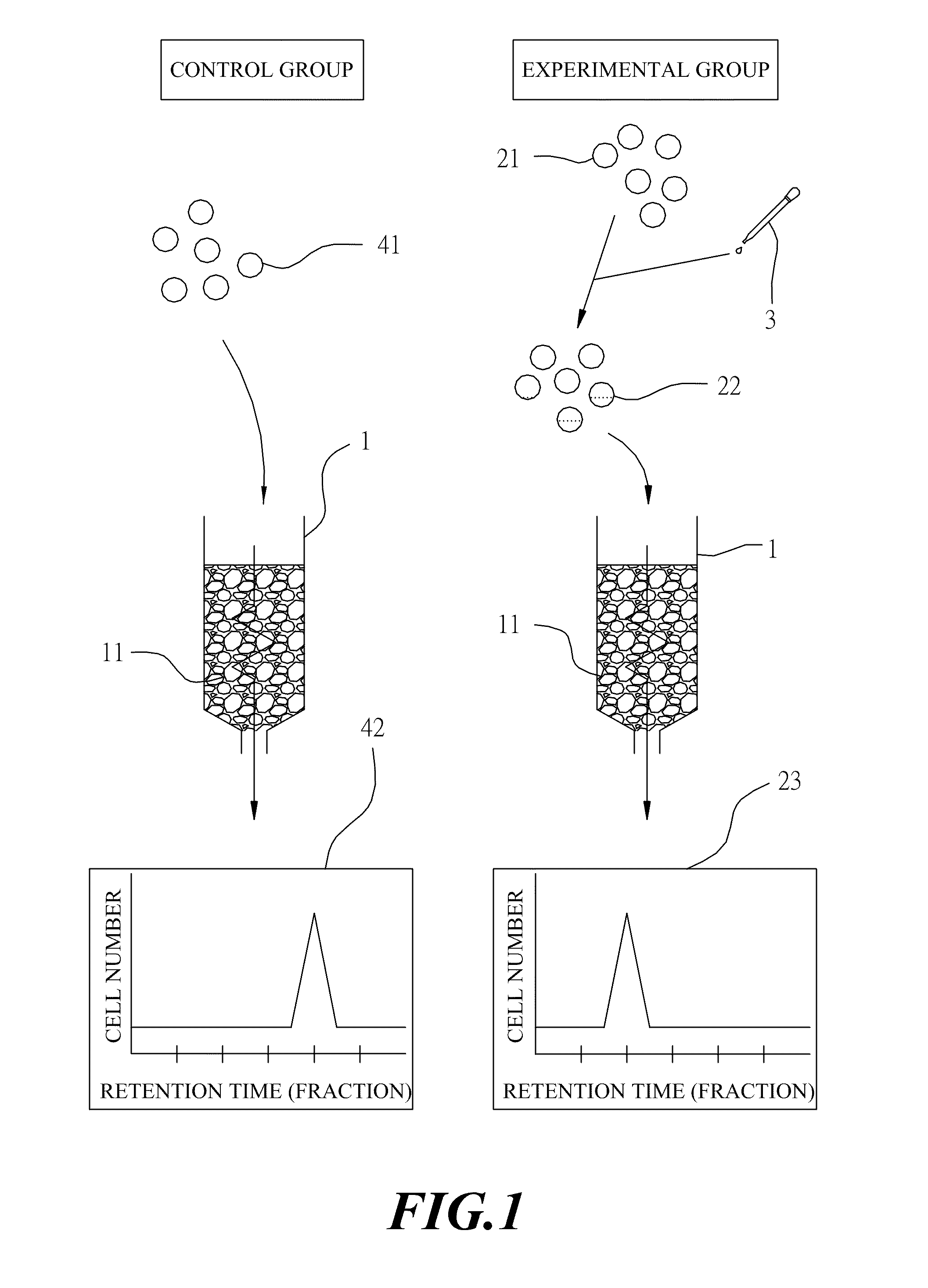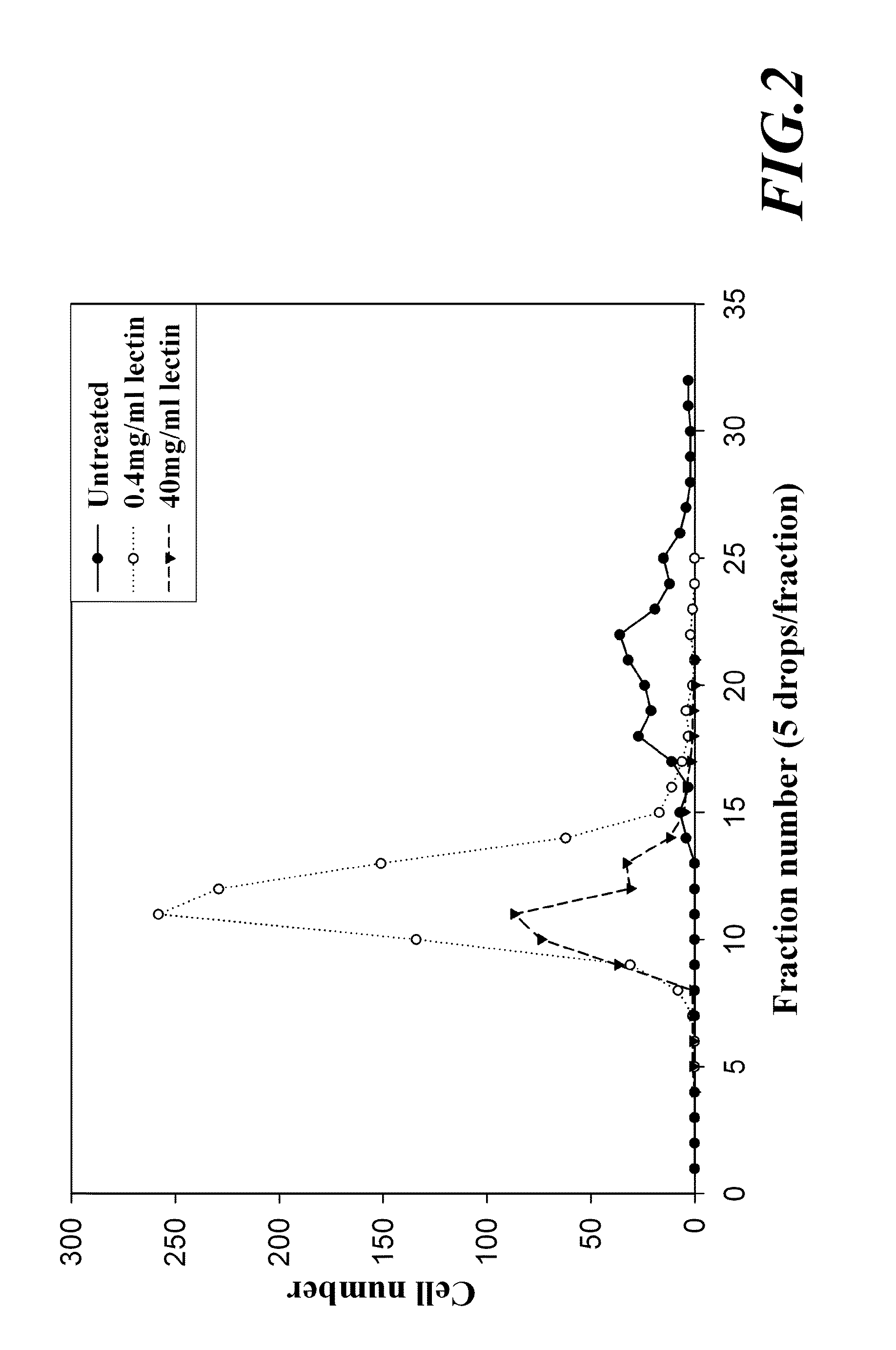Method for Analysis of Interaction Between Small Molecules and Cells and Apparatus thereof
a small molecule and interaction technology, applied in the field of interaction analysis between small molecules and cells, can solve the problems of difficult operation and time consumption, affecting the quality of cells, and separating cells by density gradient, and achieves the effect of reducing the cost involved and simplifying and rapid operation procedures
- Summary
- Abstract
- Description
- Claims
- Application Information
AI Technical Summary
Benefits of technology
Problems solved by technology
Method used
Image
Examples
example 1
Interaction of Cells and Small Molecules
[0038]The invention provides a method and apparatus to screen and analyze the interaction between small molecules and cells. The interactions between cell surface and resin particles resulting in the different retention time of cells treating by different small molecules in the column contributed to examining whether the small molecule could interact with cell or not. In this example, using lectin and shikonin as an analyzed drug (small molecule). Different small molecules may cause different interactions with the same cell, such as binding to the different receptors, or interacting with different cell surface molecules or altering the cell membrane. Hence, this will cause the retention time of the drug-treated cell (or un-treated cell) with the small molecules in the column to be different. According, the method and apparatus can be used to screen the interaction exist or not between small molecules and cell surface.
1. Lectin Altered the Rete...
example 2
Separation of Sub-Population of Mononuclear Cells
Example 2(A)
[0052]In example 2(A), the column also could be used for separating cell has an inner diameter of 6 mm, a length of 180 mm and a volume of 5 ml. This column was packed with resin particles and was washed first and thereafter, filled with a phosphate buffered saline (PBS).
[0053]A concentrated mononuclear cells suspension was diluted with PBS to a cell suspension at a concentration of 1×106 mononuclear cells / ml, containing still a certain amount of erythrocytes. This cell suspension was loaded then on the above-described column. The column was eluted subsequently with PBS at a flow rate of 3 ml / min and cell fractions were collected in test tubes, respectively, in a manner that each test tube collected 5 drops of cell suspension eluent. Thereafter, the eluted cell suspension in each test tube was examined under an optical microscope and numbers of erythrocytes and leukocytes were counted by a cell counter, respectively. The r...
example 2 (
Example 2(B)
[0055]In example 2(B), the column also be used for separating cell was changed and has an inner diameter of 8 mm, a length of 200 mm and a volume of 10 ml. The procedure of example 2(A) was repeated, and the column was filled at a flow rate of 1.2 ml / min. The result was shown in FIGS. 7 and 8. FIG. 7 shows the number of mononuclear cells, while FIG. 8 shows the relative percentage of each sub-population of mononuclear cells.
[0056]The results obtained above suggest that the column could not achieve any separation effect against a single population of erythrocyte as shown in FIG. 4. For mononuclear cells in a same sample, several bands were eluted successively, as shown in FIGS. 5 and 7. After analyzing further by fluorescence immuno-staining, the column provided a partition effect with respect to various sub-populations of mononuclear cells such as, T lymphocyte, B lymphocyte and monocyte, and revealed a significantly difference variation, as shown in FIGS. 6 and 8.
[0057]...
PUM
| Property | Measurement | Unit |
|---|---|---|
| size | aaaaa | aaaaa |
| pH | aaaaa | aaaaa |
| diameters | aaaaa | aaaaa |
Abstract
Description
Claims
Application Information
 Login to View More
Login to View More - R&D
- Intellectual Property
- Life Sciences
- Materials
- Tech Scout
- Unparalleled Data Quality
- Higher Quality Content
- 60% Fewer Hallucinations
Browse by: Latest US Patents, China's latest patents, Technical Efficacy Thesaurus, Application Domain, Technology Topic, Popular Technical Reports.
© 2025 PatSnap. All rights reserved.Legal|Privacy policy|Modern Slavery Act Transparency Statement|Sitemap|About US| Contact US: help@patsnap.com



